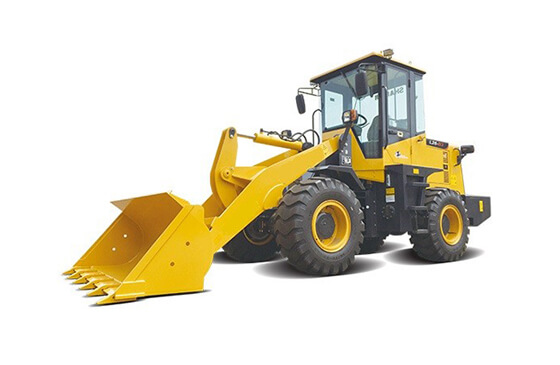

Warm Tip: If you want to know more details about equipment, solutions, etc, please click the button below for free consultation, or leave your requirements!

Production technology of electric shovel for open-pit mining includes four processes: penetration, blasting, loading process and transportation. Loading process is the third operation after mine penetration and blasting, and it is the central link of all mine mining processes. This article briefly introduces the loading process in four aspects.
Mining face
Loading method
Technical requirements for the loading process
Factors affecting the production capacity of loading process
(1) Working face height: the height of the mine steps, which refers to the vertical distance between the upper and lower plates of the two steps. The working face height is usually 10-18m, for example, the working face height of a limestone mine is 10m during loading process.
(2) Mining area width and excavating belt width: The mining zone width is the physical width of the blasting zone, and the excavating belt width is the width of the excavator at one time. When the ore rock is soft without blasting, the width of the mining area is equal to the width of the excavating belt. Under normal circumstances, the width of the mining area is 16-40m. For example, the width of a certain Nanfen mining area is generally 30-40m, and the width of the excavating belt is 20m.
(3) Length of mining area: the length of the part of the working line that divides the working steps into one excavator.
(4) Working plate width: generally 40-80m.
Loading methods in mining areas are generally divided into: flat loading, top loading, inverted stacking and combined loading.
Electric shovel must be excavated in strips, and the excavation must be clean at one time. The work must be carried out in accordance with the quality and quantity of the instructions, and the working face must be kept flat, straight, neat and clean during loading process. The technical requirements are as follows:
(1) Loading requirements: The loading must be evenly distributed, not loading sideways, not pressing on the side of the car, not allowed to push the car with the bucket, not allowed to cross the car cab, and not allowed to hit the car.
It is strictly forbidden to load large ore that exceeds the regulations. When unloading, the height of the bottom door of the bucket from the carriage and the cargo pile should not exceed 300-500mm.
If it is pressed by a large block, the bucket is not allowed to raise or swing left and right, and the bucket should be slowly moved out of the upper part of the carriage for handling.
The loader must be loaded strictly according to the vehicle-mounted capacity.
(2) The requirements of the mining face: all obstacles on the working face of the mining area need to be cleaned before loading. The working face height of the power shovel of 10m³ and below shall not exceed 12m, and the height of the shovel shall not exceed 18m for 16.8 m³, 18 m³ and 20 m³.
Large pieces of ore thrown by the shovel are not allowed to be stacked within the shovel's turning radius. The length of a single shovel working line should generally be more than 300m for automobile transportation;
the average working flat plate width should be greater than 60m, and the minimum width for automobile transportation is 37m.
(3) Mining requirements: the mining must start slowly, so that the large pieces of the foundation in the explosion-proof pile will damage the equipment due to excessive force, and it is not allowed to hardly bite the foundation and large pieces.
In the mining process, the click on the blocked rotor shall not exceed 10s, let alone the continuous blocked. When the bucket is sluggish and the pile is not lifted, do not over-strength or slew it too fast. Pay attention to obstacles during the slewing.
For ore-rock mixed explosion areas, separate injection must be carried out during the loading process to reduce ore loss and dilution rate. When digging, clean the pumice and the bottom corners of the steps to expose the hard bottom and strictly control the elevation of the flat plate of the mining area. The height difference of the same explosion area should not exceed 0.5m.
When the electric shovel cuts the road and cuts, the road width, flatness, and cut slope and length must meet the transportation requirements.
When the electric shovel is moving for a long distance, the driving shaft must be in front, the driving shaft must be behind when going downhill, and in front when climbing. The walking slope is not more than 12°, and the walking safety brake device must be reliable.
There are many factors that affect the production capacity of loading process, the most important of which are:
(1) Blasting quality;
(2) Coordination of production organization;
(3) The influence of natural conditions in the mining zone;
(4) Loading equipment failure and maintenance quality;
(5) The level of operation skills of loader drivers.
The four aspects of the loading process have been introduced above: loading face, loading methods, loading process
technical requirements and the main factors affecting loading capabilities. In the actual operation process, you must strictly follow the designed process to ensure the smooth completion of mining and assembly operations, and also lay a solid foundation for mine transportation.
If you want to know more about mining technology and equipment, please leave a message or consult online customer service for detailed information.
1How Does Excavator Classified?
 0
0
 3272
3272
28 Characteristics of Off-highway Dump Trucks
 0
0
 3594
3594
34 Types of Rock Drill
 0
0
 2812
2812


What Are the Differences Between CIP and CIL?
 11095
11095
 0
0